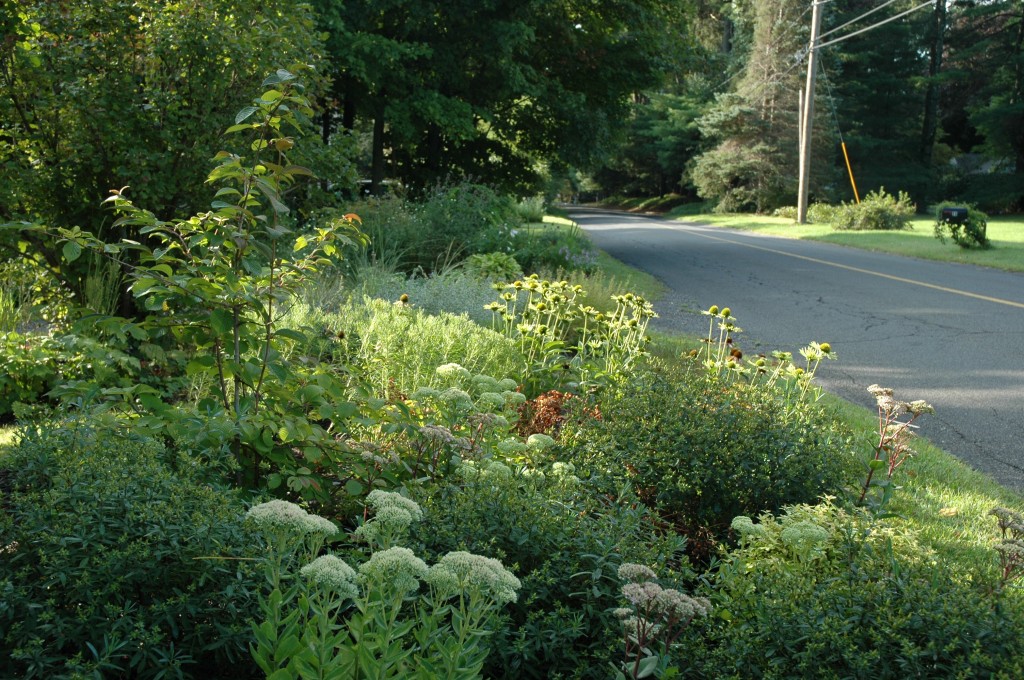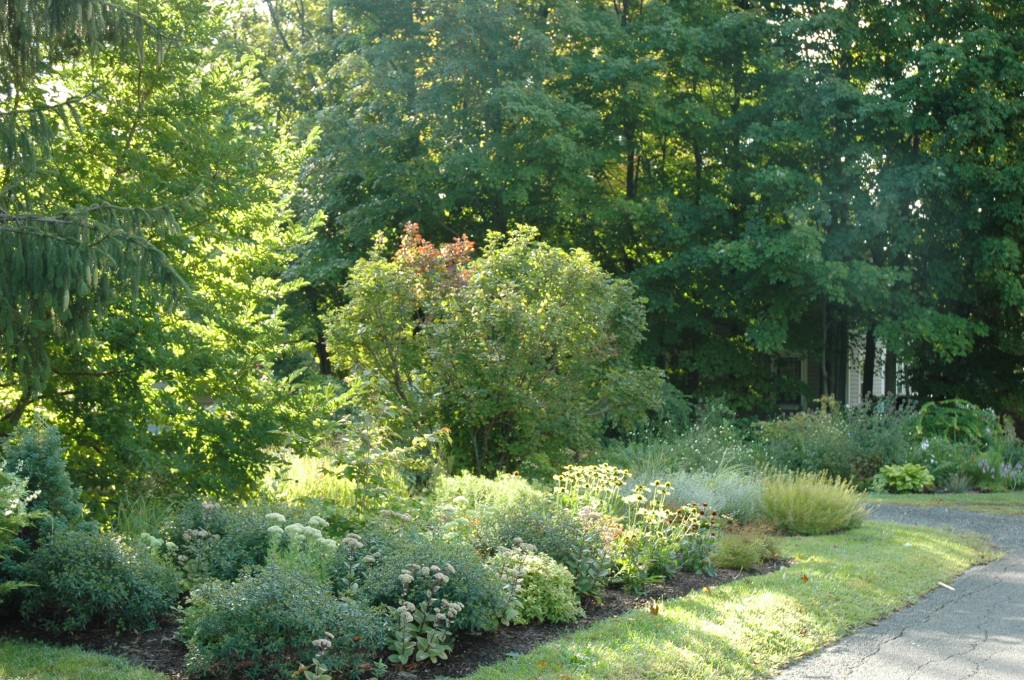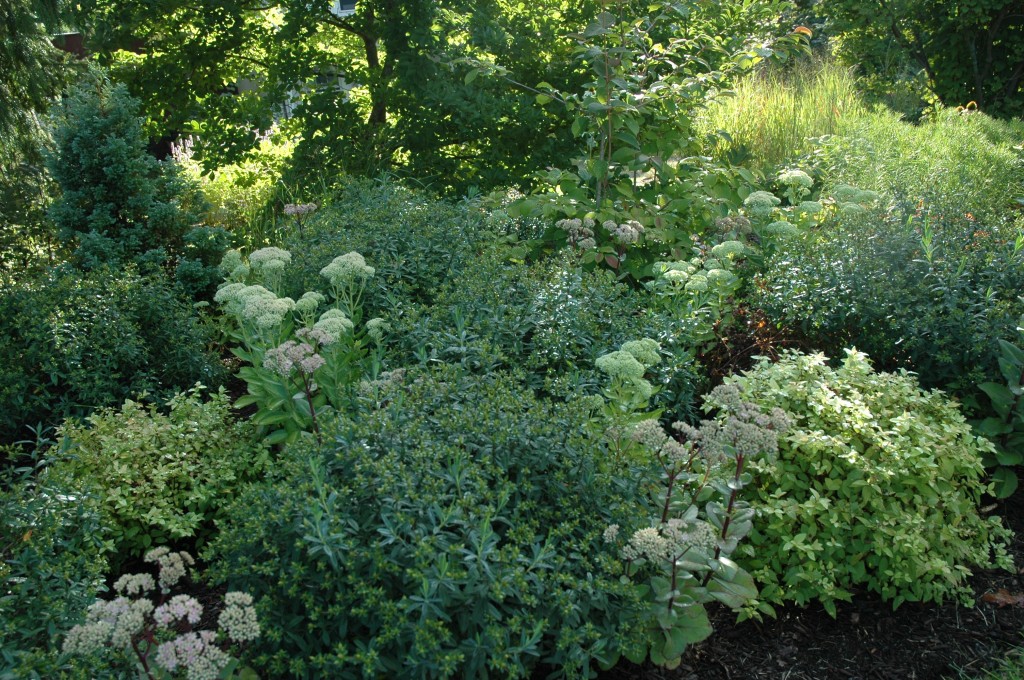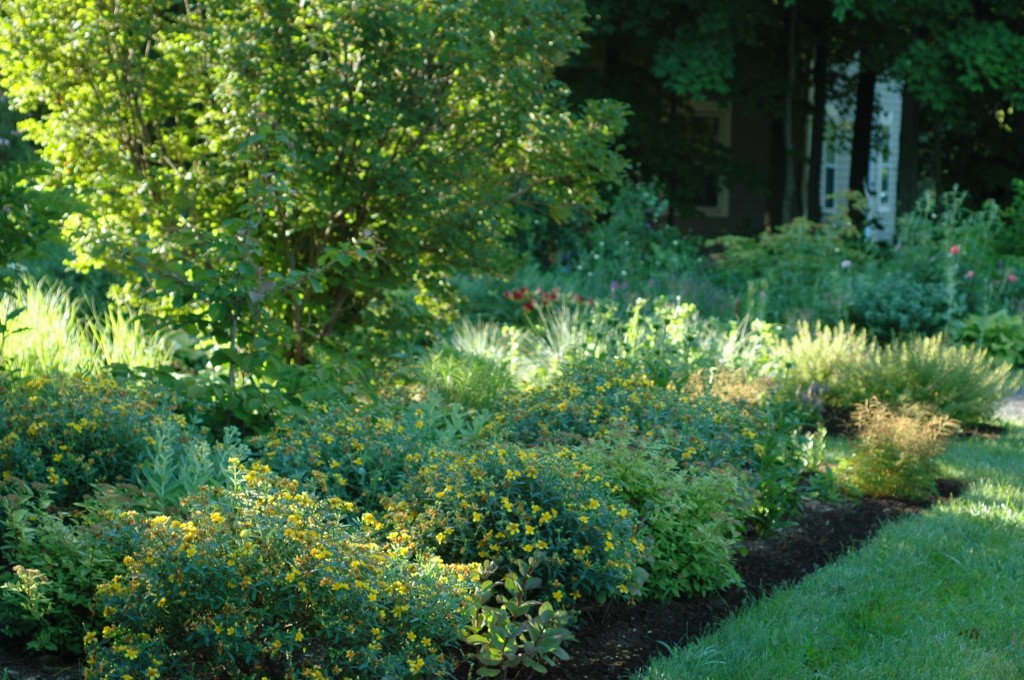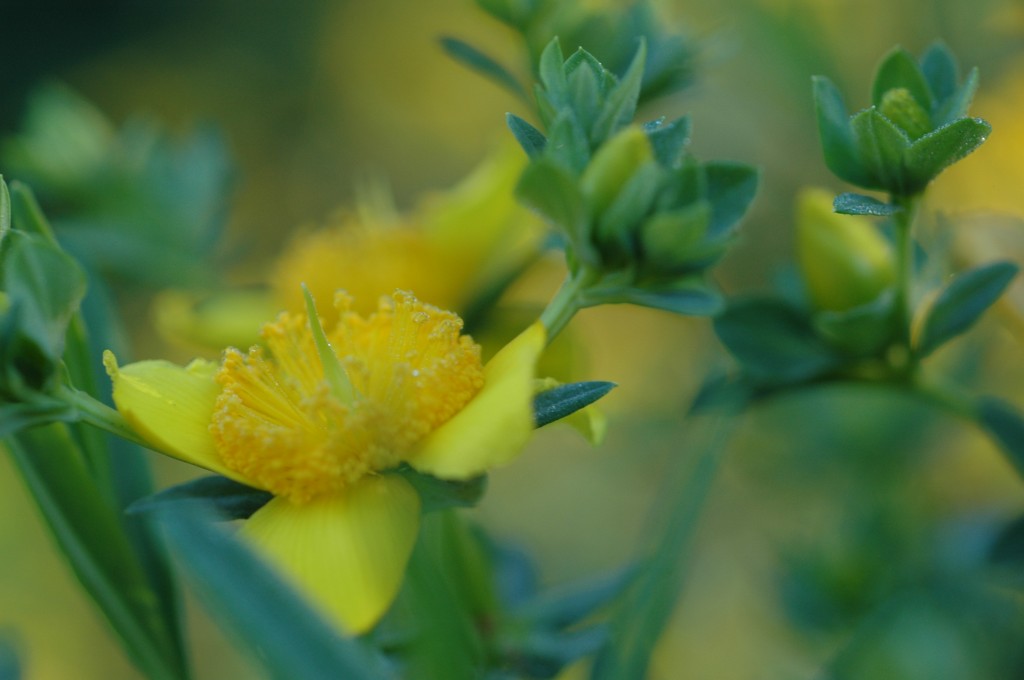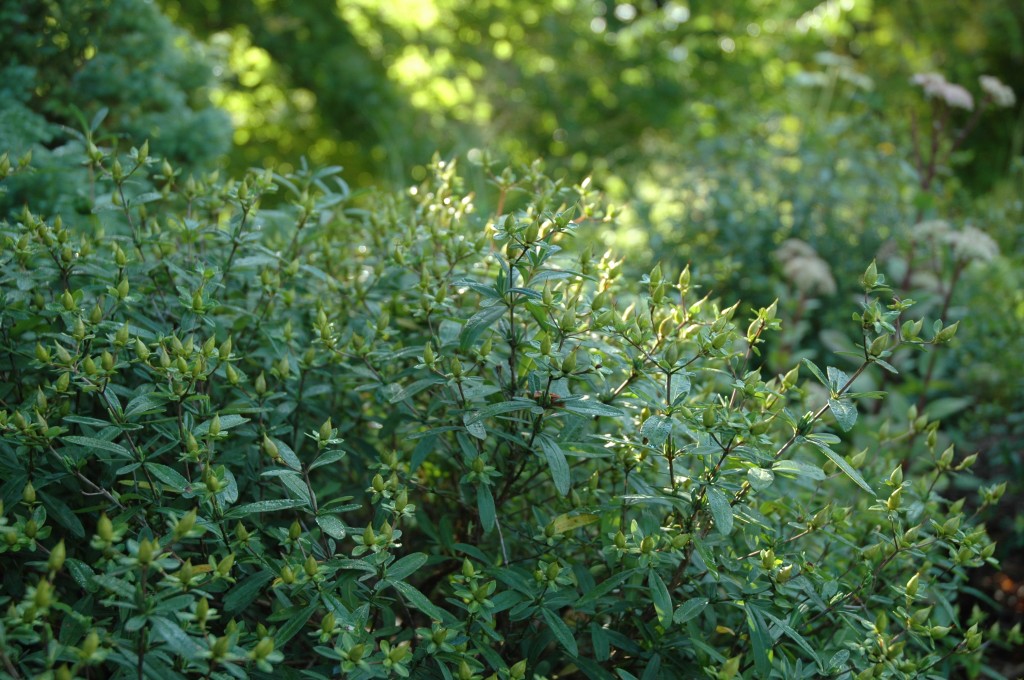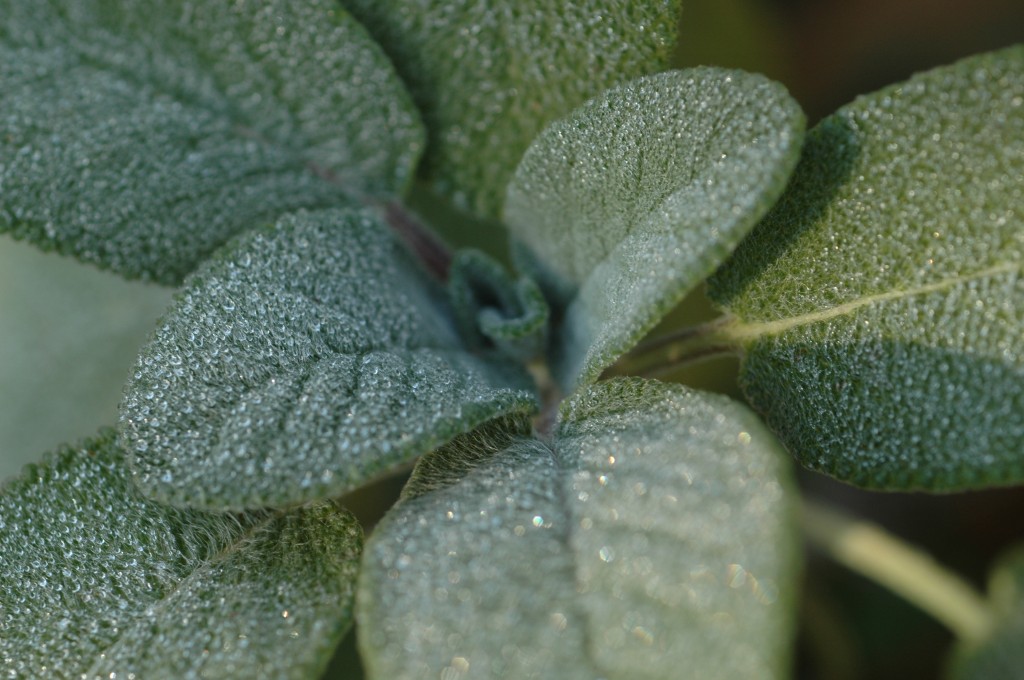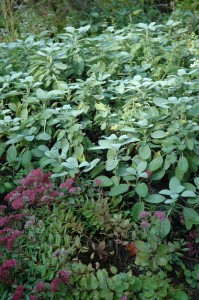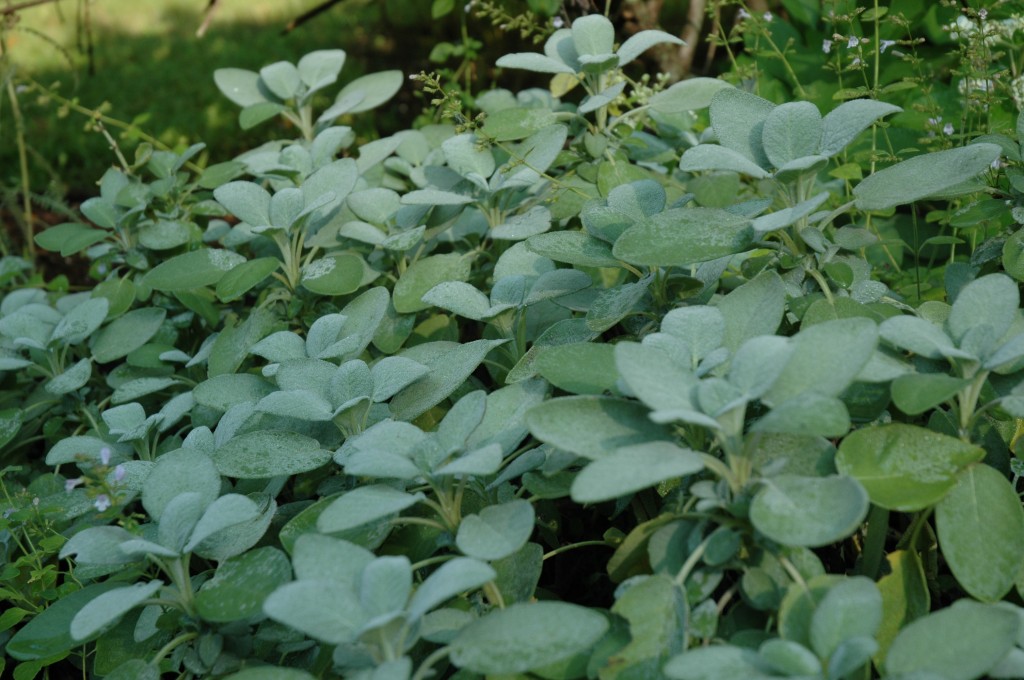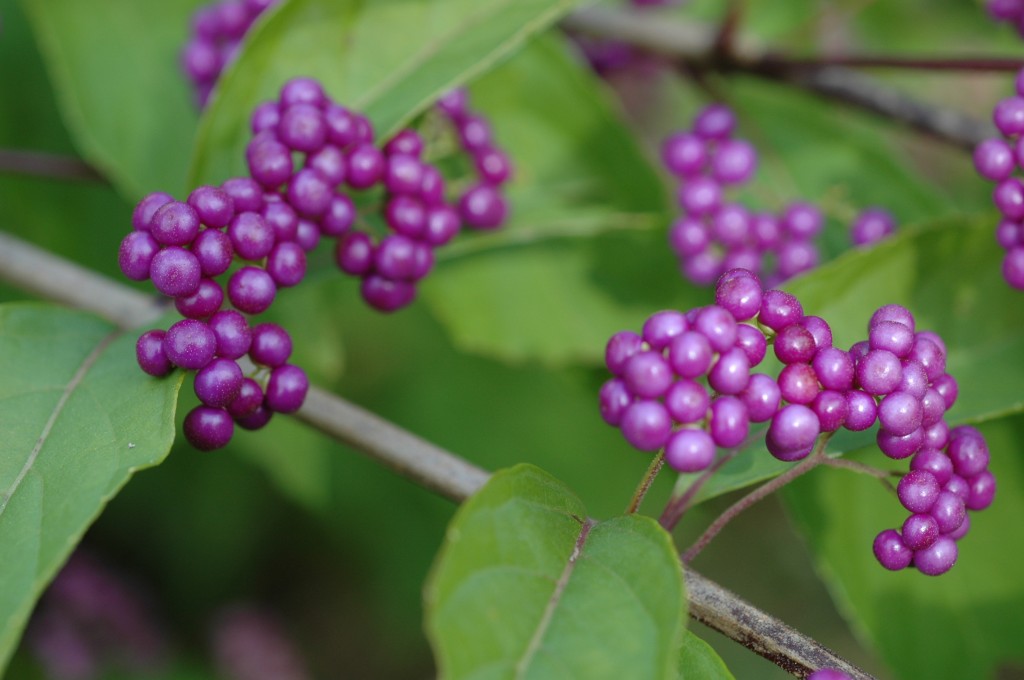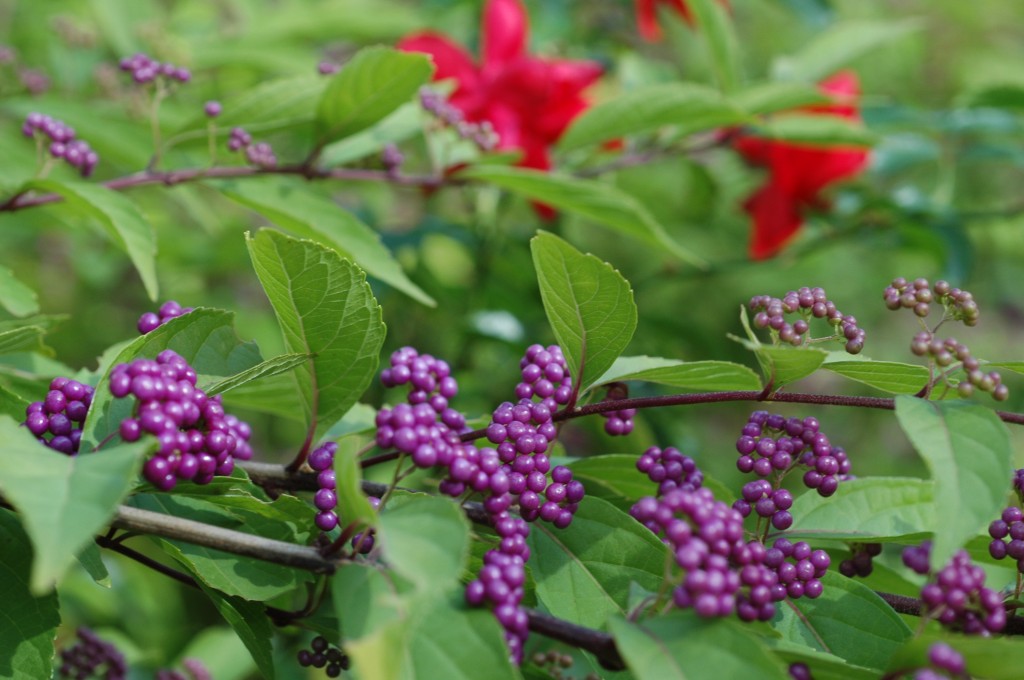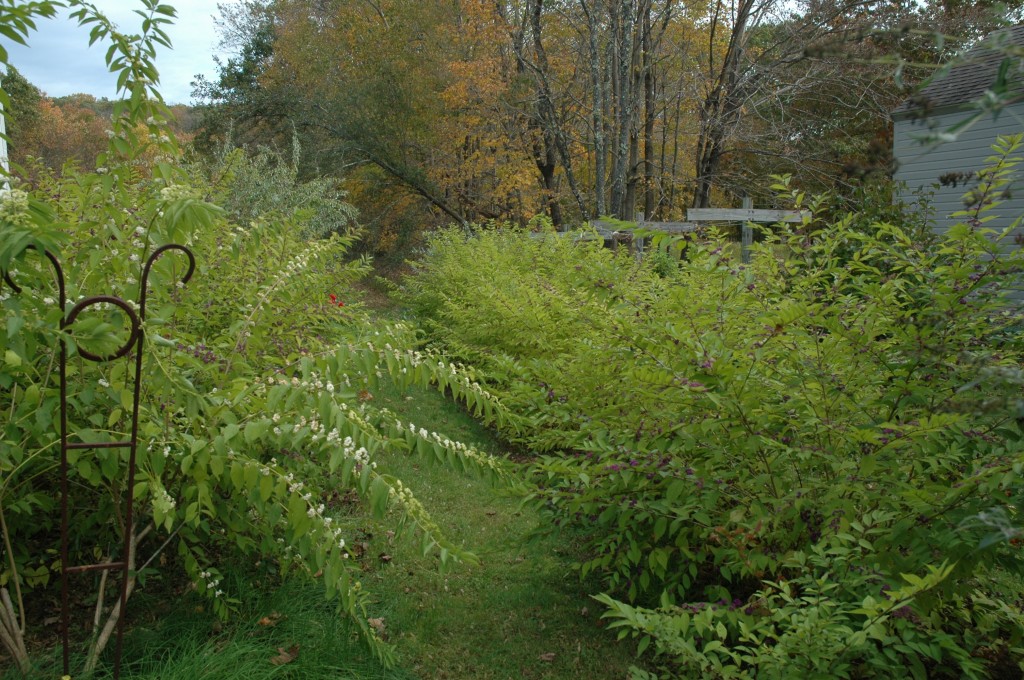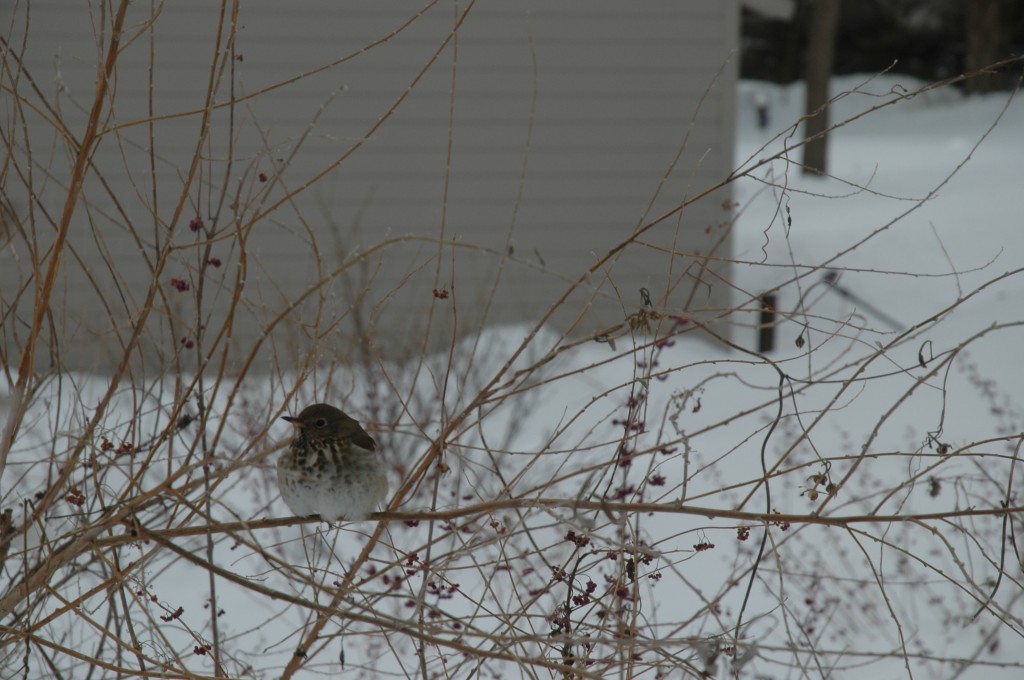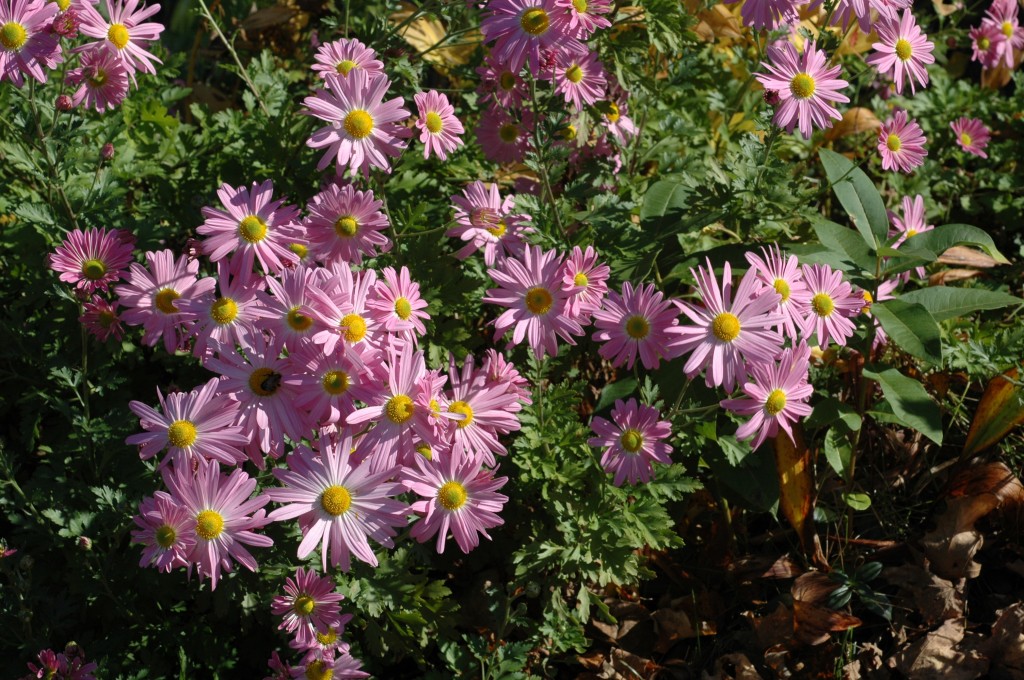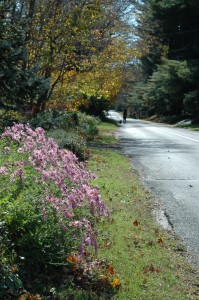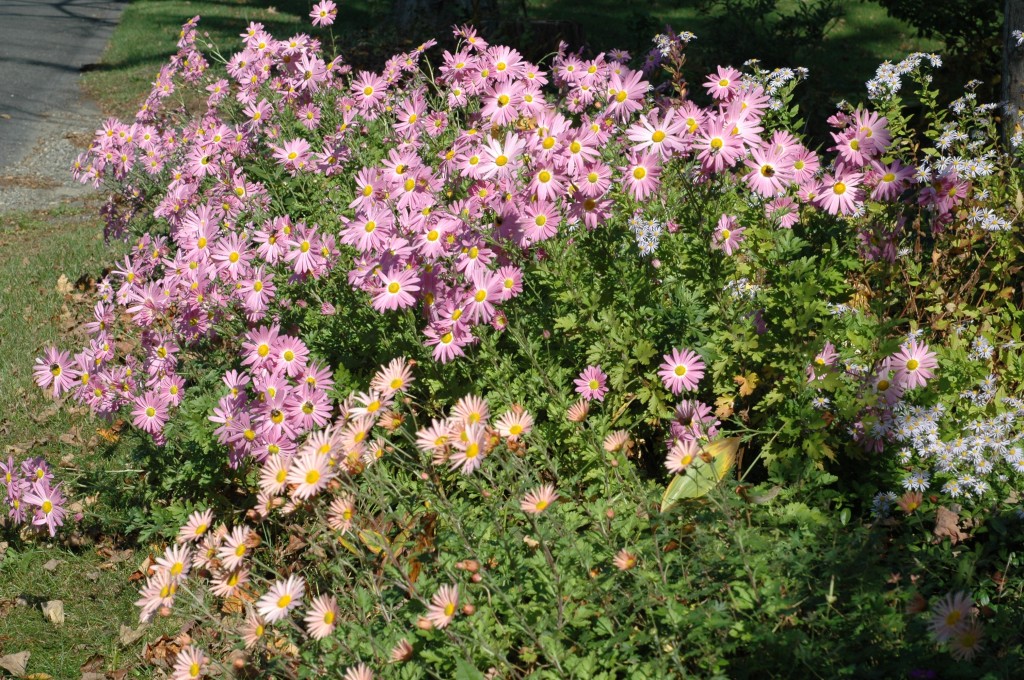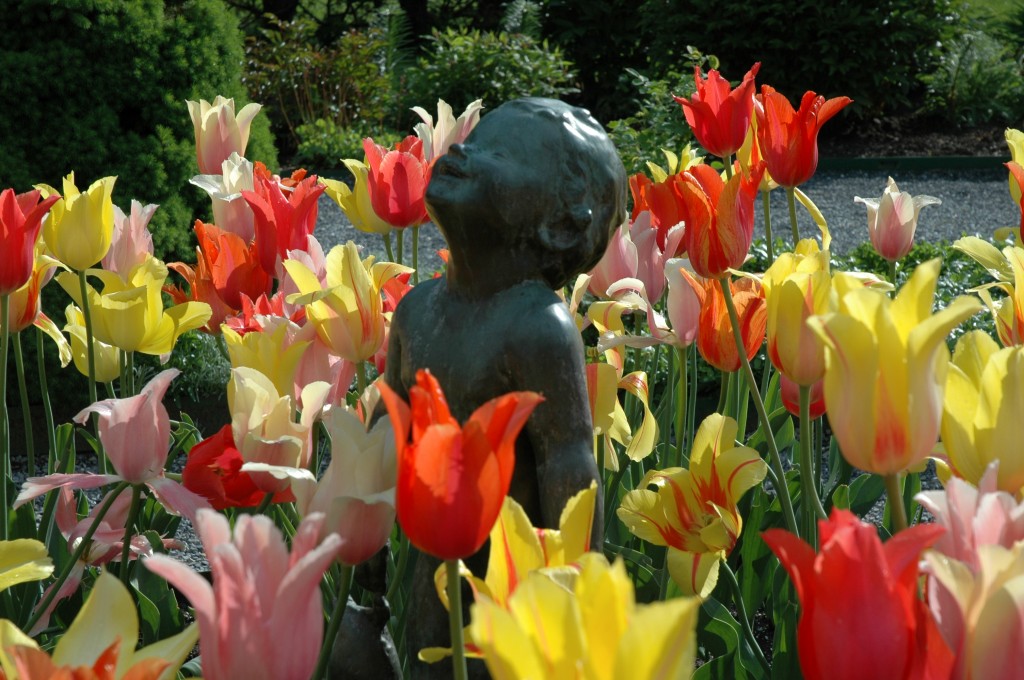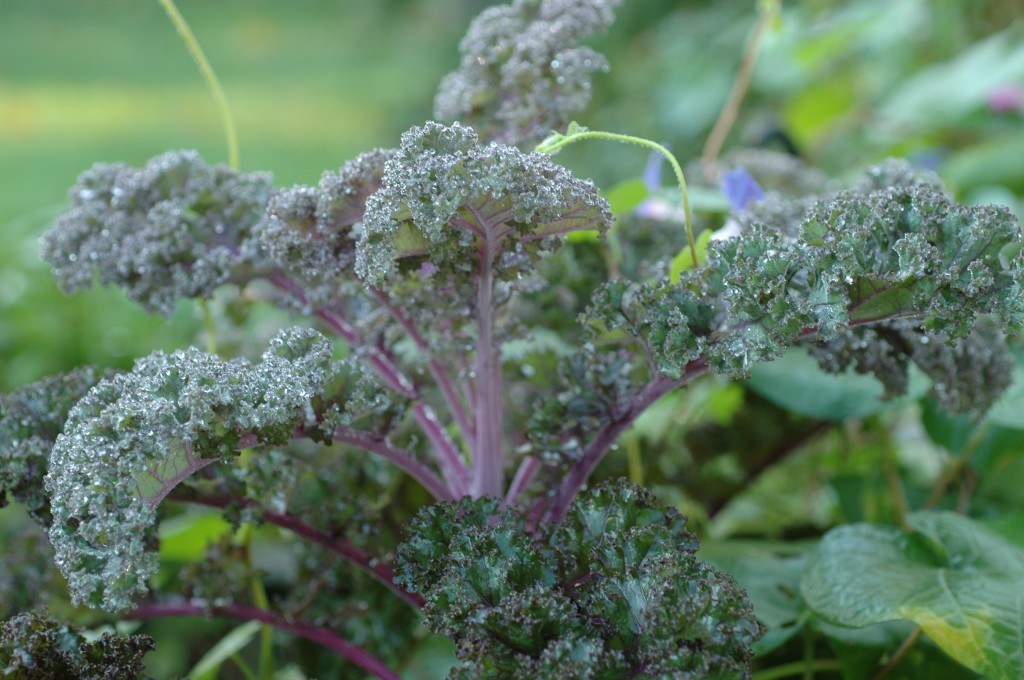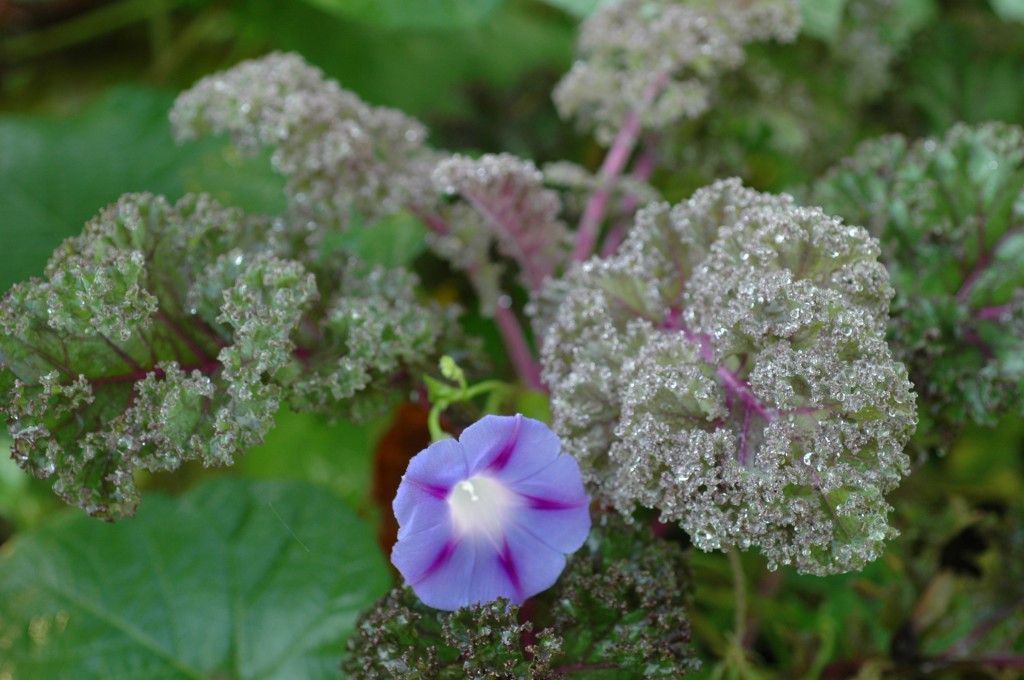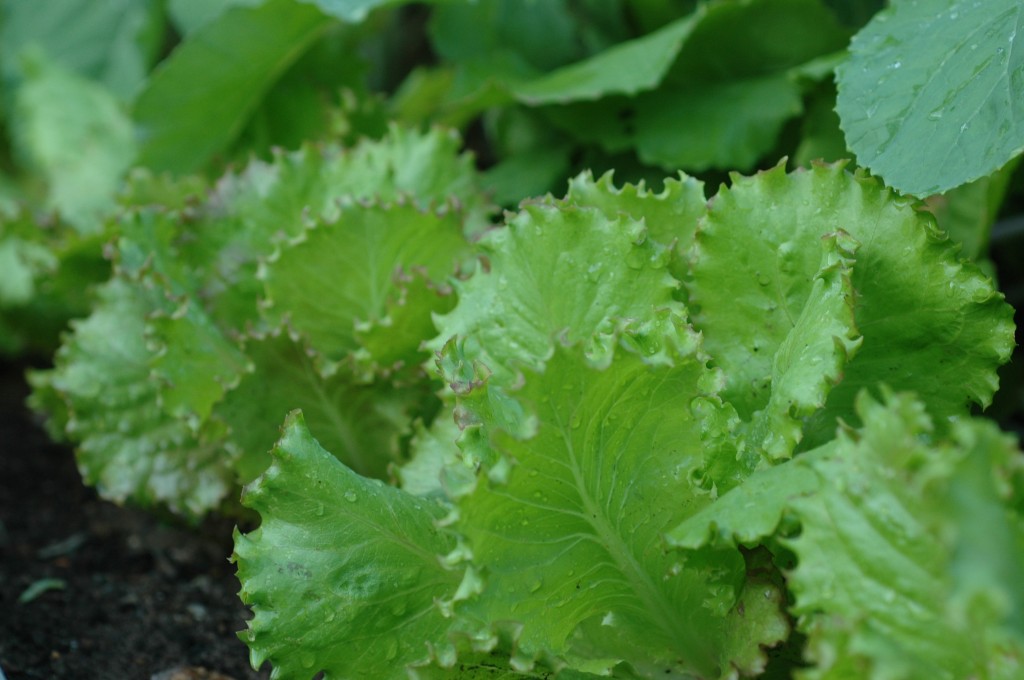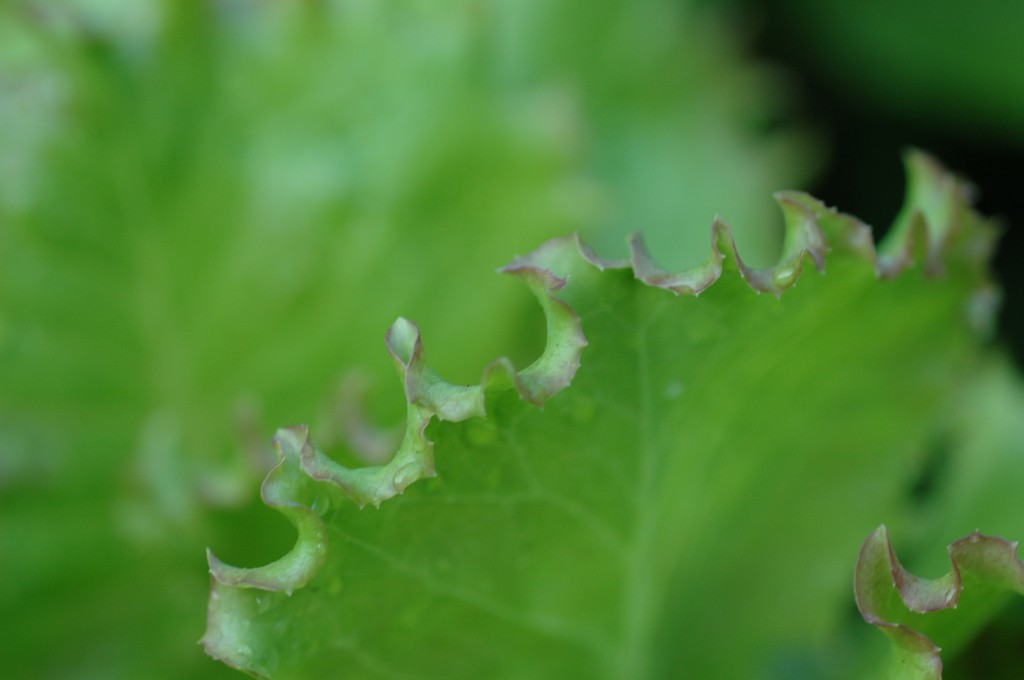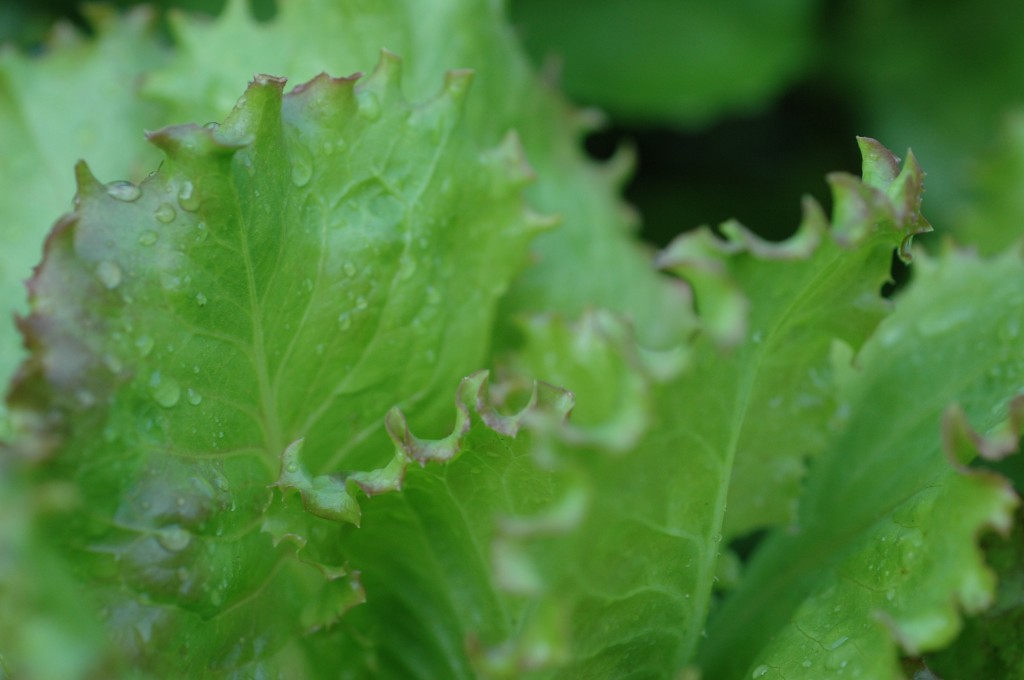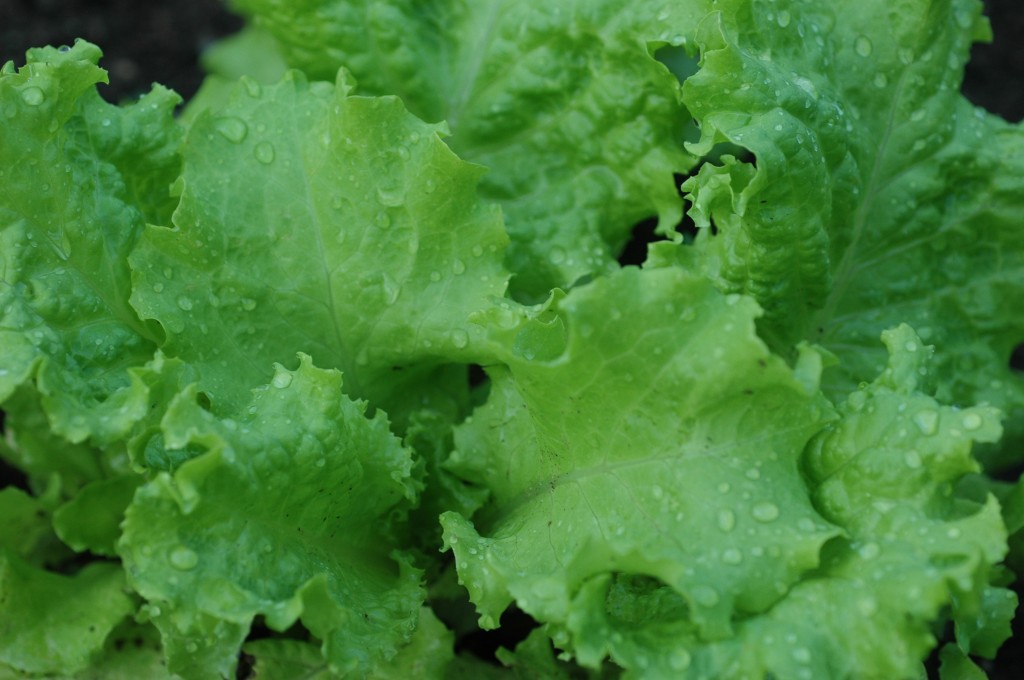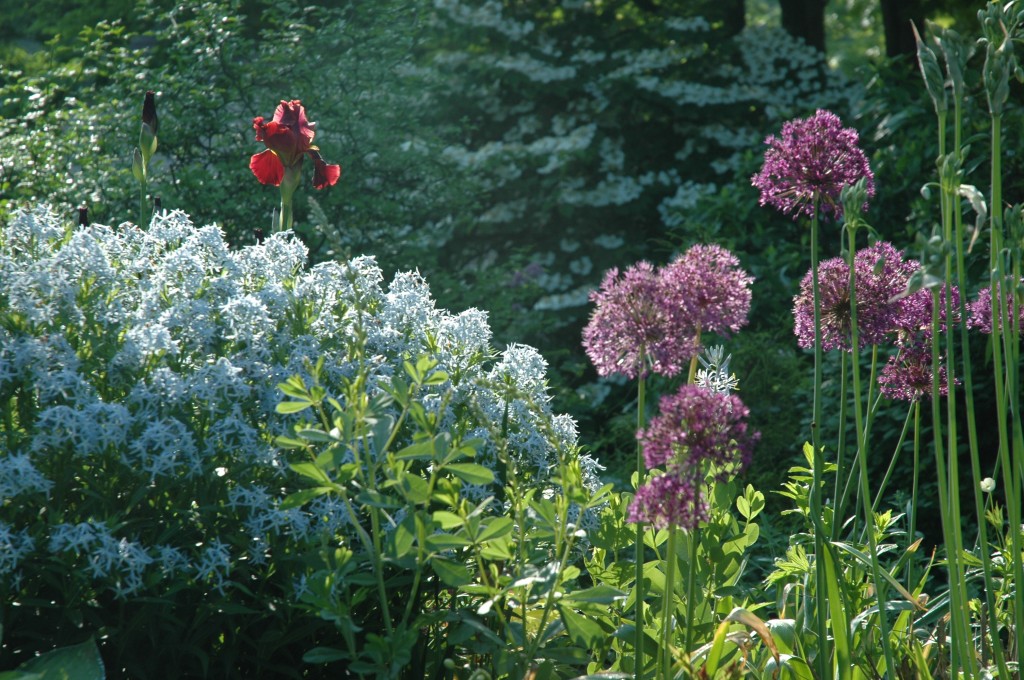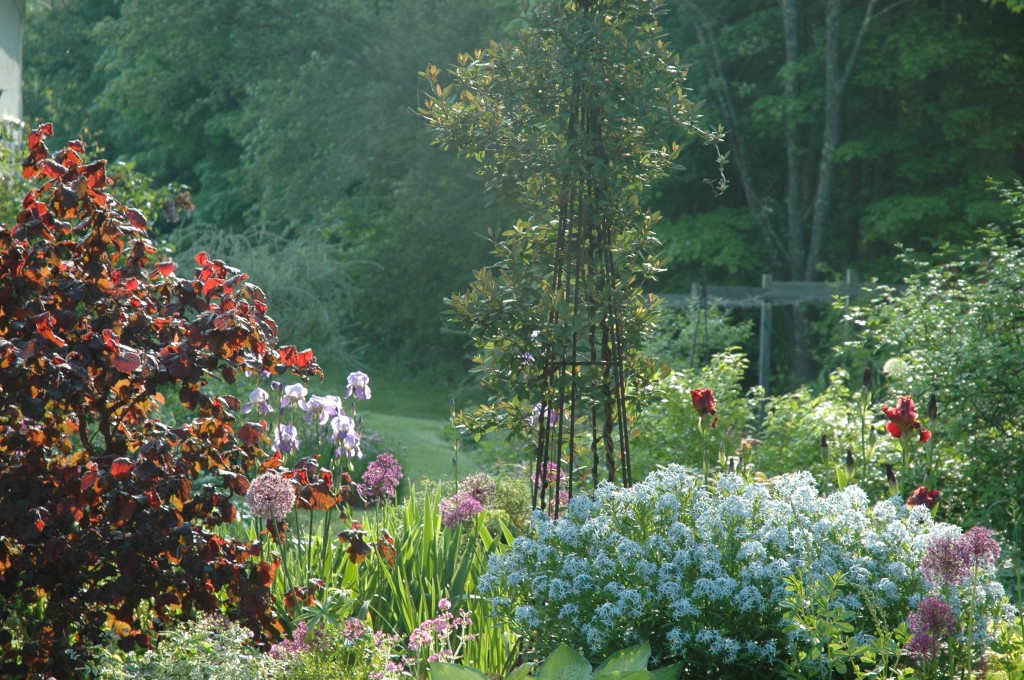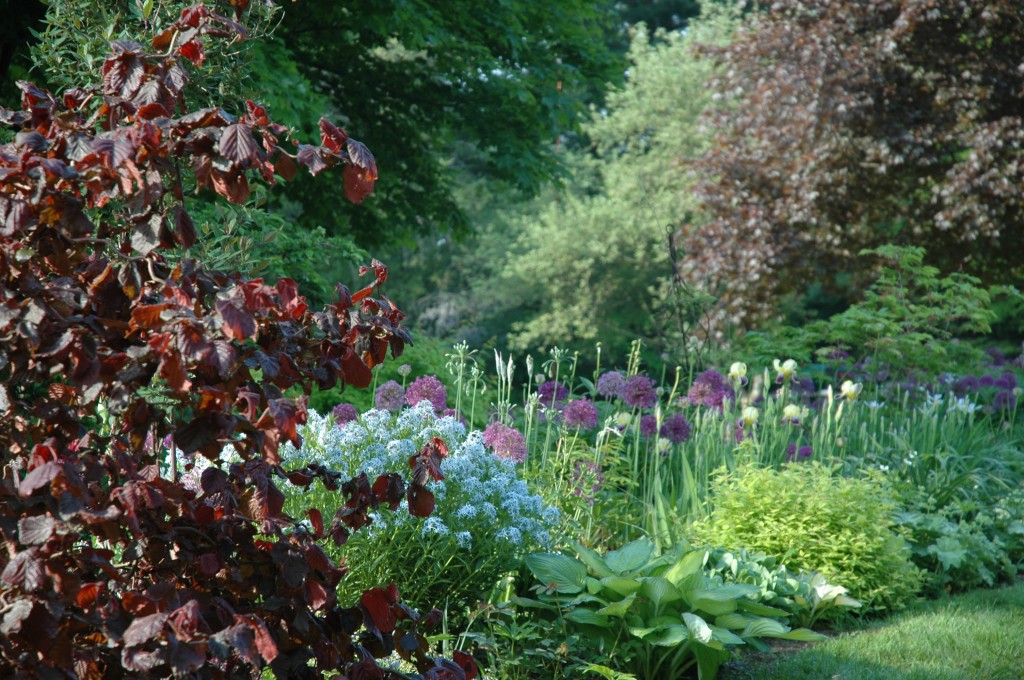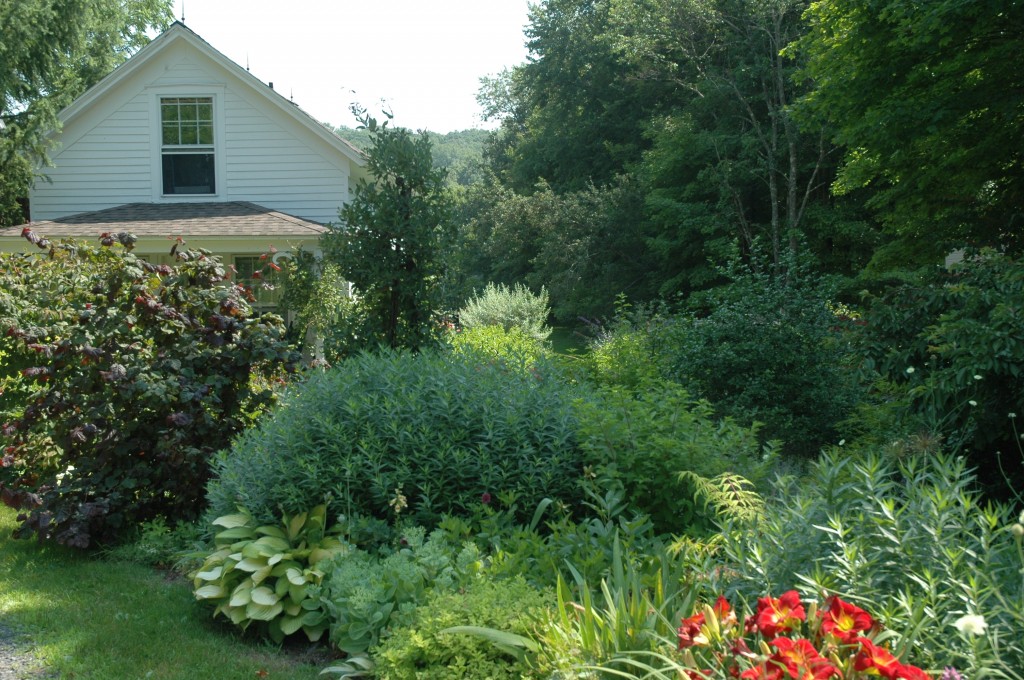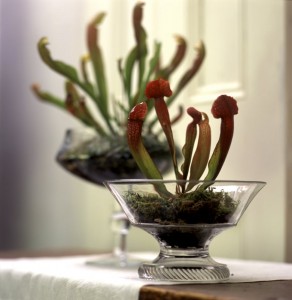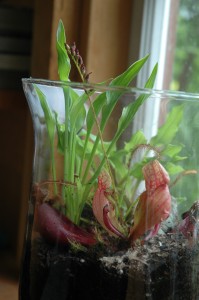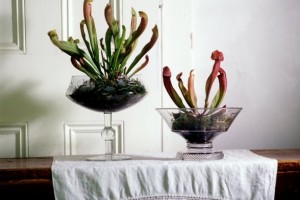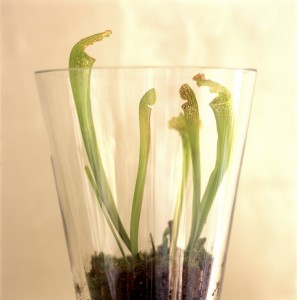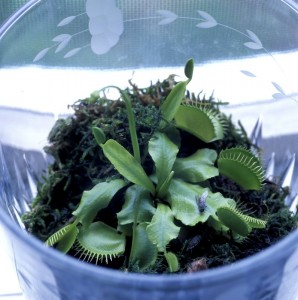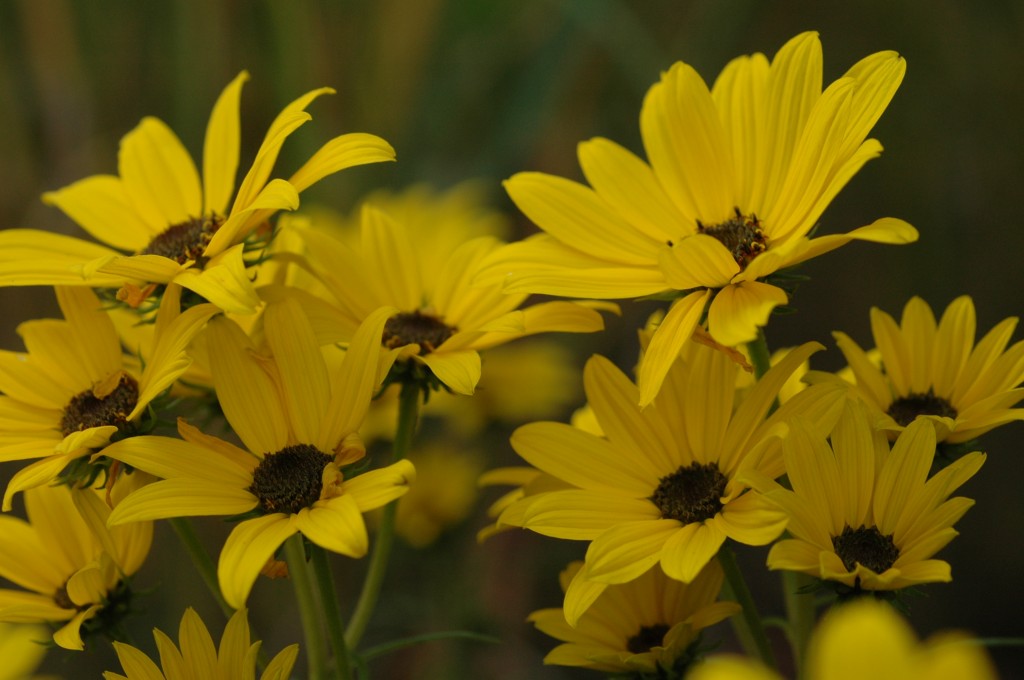 Now it’s your turn. I need help. (Damsel in distress alert!) Originally, my intention when starting this blog was to get feedback on plants. Then I went straight into blabbering mode and shared all my favorites. Well, now I have some questions about a newbie in my garden. Anyone out there tried Helianthus salicifolius ‘First Light’? Raise your hand.
Now it’s your turn. I need help. (Damsel in distress alert!) Originally, my intention when starting this blog was to get feedback on plants. Then I went straight into blabbering mode and shared all my favorites. Well, now I have some questions about a newbie in my garden. Anyone out there tried Helianthus salicifolius ‘First Light’? Raise your hand.
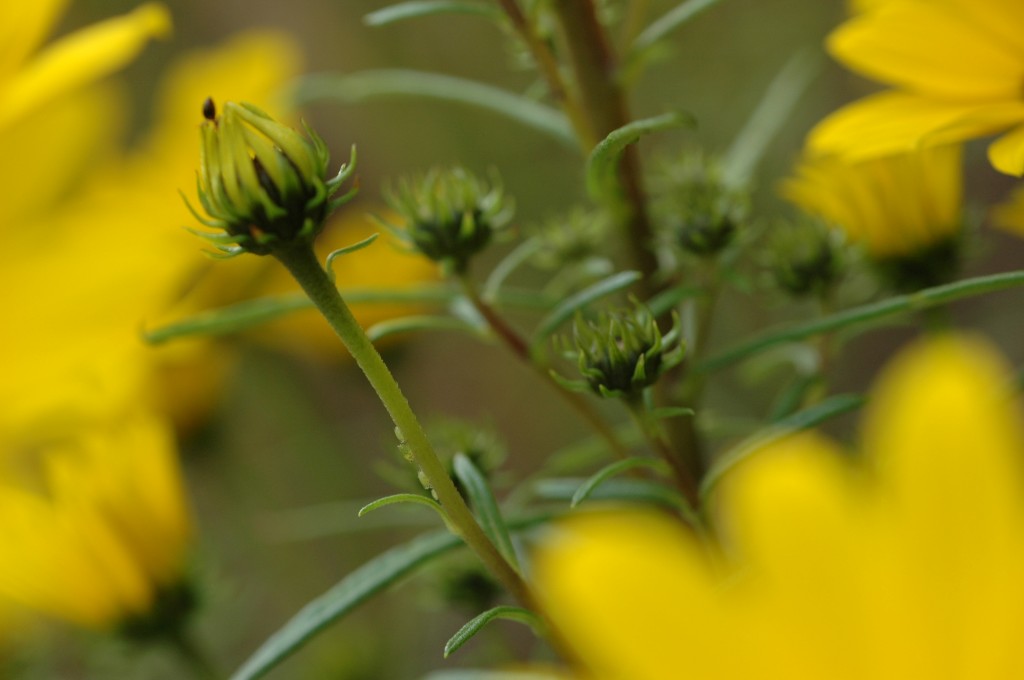 Because I just adopted one. Linden Hill in Ottsville, PA (www.lindenhillgardens.com) was the scene of the crime. It was the buds that hooked me. The thin, needle-like foliage was also a come on. But the clincher was those buds that look like jewel settings before they fit the diamond inside. I walked by it a zillion times and didn’t succumb. I told myself that Zone 6 was a stretch. And I didn’t lose a single bud on the way home.
Because I just adopted one. Linden Hill in Ottsville, PA (www.lindenhillgardens.com) was the scene of the crime. It was the buds that hooked me. The thin, needle-like foliage was also a come on. But the clincher was those buds that look like jewel settings before they fit the diamond inside. I walked by it a zillion times and didn’t succumb. I told myself that Zone 6 was a stretch. And I didn’t lose a single bud on the way home.
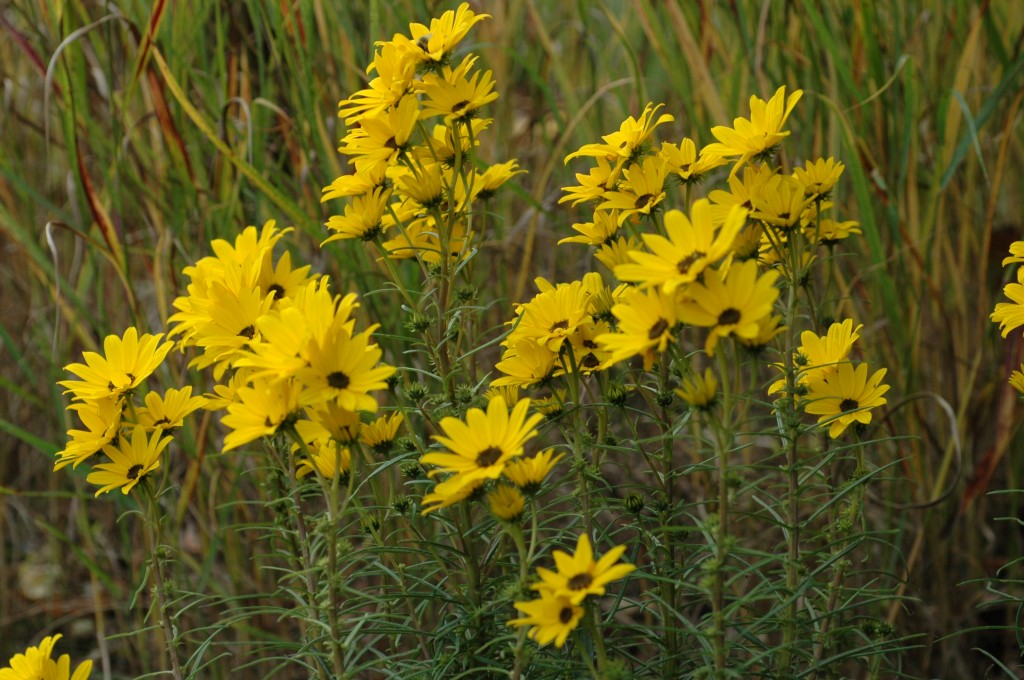 It’s not like I had a spot selected for it. Okay. The truth is that it sat for a couple of weeks before its new home was shovel ready. Still, the buds remained in their charming jewel setting state. I began to wonder whether that was the full show. Finally, the moment came to get it into the ground. My rule is that I can’t purchase further plants until everything at home is in the ground (anyone else inflict this on themselves?). So by mid-October, ‘First Light’ was positioned beside a stand of Panicum virgatum ‘Shenandoah’. And then the flowers finally started to pop.
It’s not like I had a spot selected for it. Okay. The truth is that it sat for a couple of weeks before its new home was shovel ready. Still, the buds remained in their charming jewel setting state. I began to wonder whether that was the full show. Finally, the moment came to get it into the ground. My rule is that I can’t purchase further plants until everything at home is in the ground (anyone else inflict this on themselves?). So by mid-October, ‘First Light’ was positioned beside a stand of Panicum virgatum ‘Shenandoah’. And then the flowers finally started to pop.
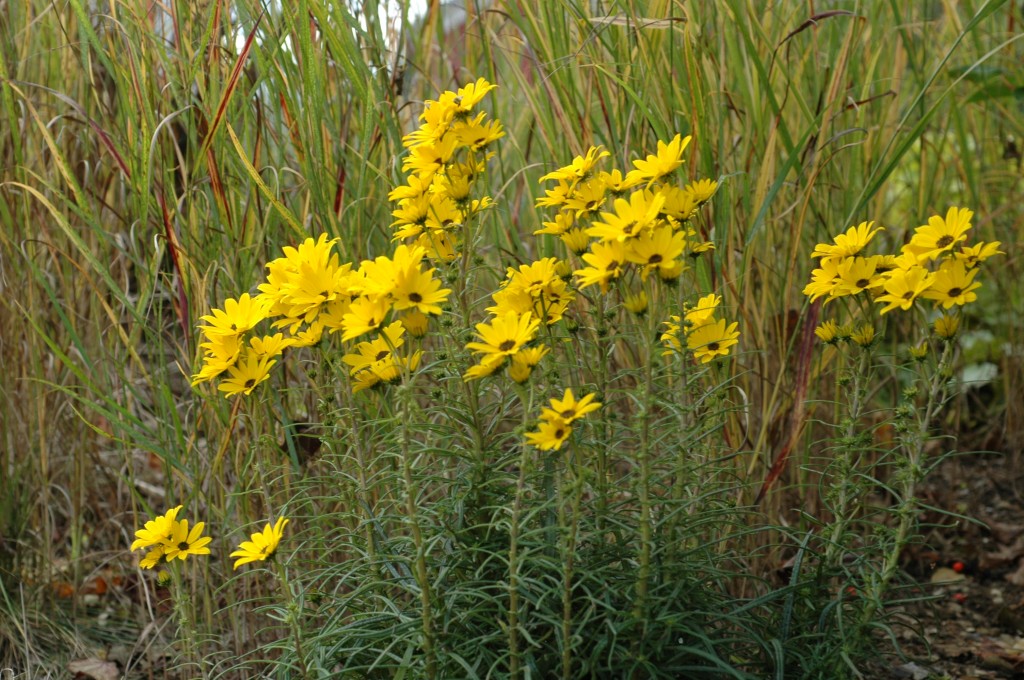 Pop’s a good verb for the explosion. Because out of those infinitely modest buds came an electric show. Although I’m not mad for yellow daisies, these were adorable. My plant stands less than 3 feet. So here’s the first question = Anybody know if ‘First Light’ truly remains short? If so, what’s not to love?
Pop’s a good verb for the explosion. Because out of those infinitely modest buds came an electric show. Although I’m not mad for yellow daisies, these were adorable. My plant stands less than 3 feet. So here’s the first question = Anybody know if ‘First Light’ truly remains short? If so, what’s not to love?
Next question = Anybody know if this guy is prone to wander lust? I might not mind if it makes the rounds but remains short. By the way, ‘First Light’ is a confusing name. ‘Last Light’ would be more apropos because the plant was really the last hurrah in my garden. Long after everything but a few roses, asters, and mums were silenced, ‘First Light’ was still singing away.
And finally = Anybody have experience with the hardiness of this treasure? Speak now…

